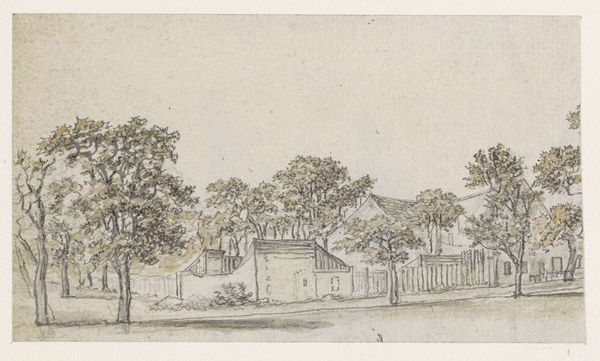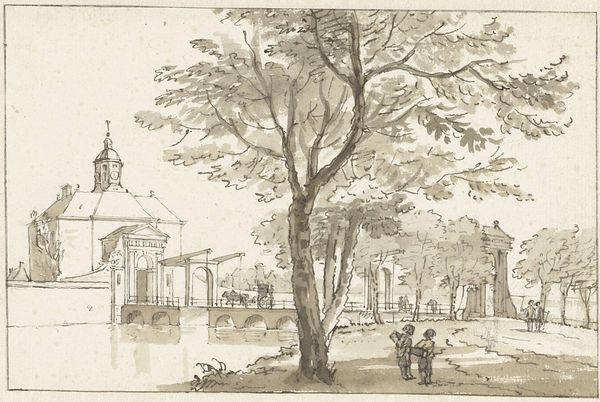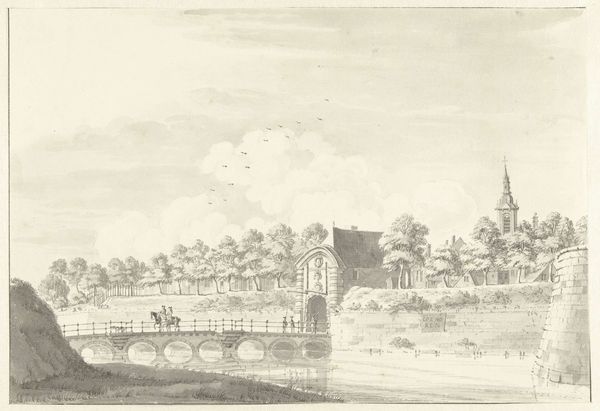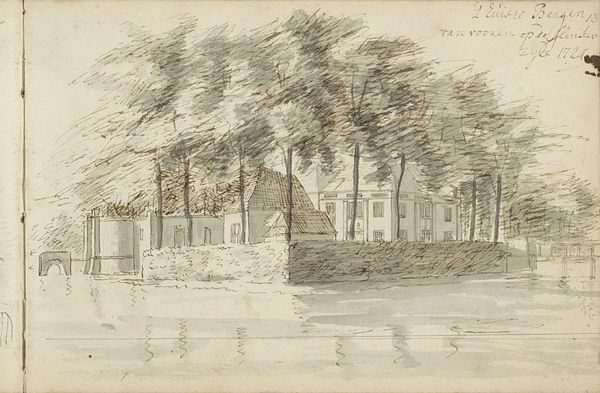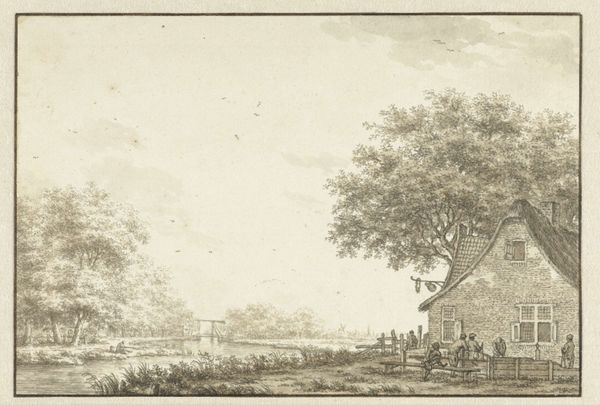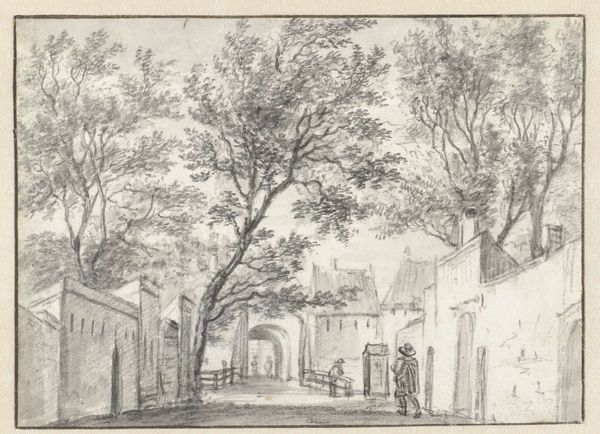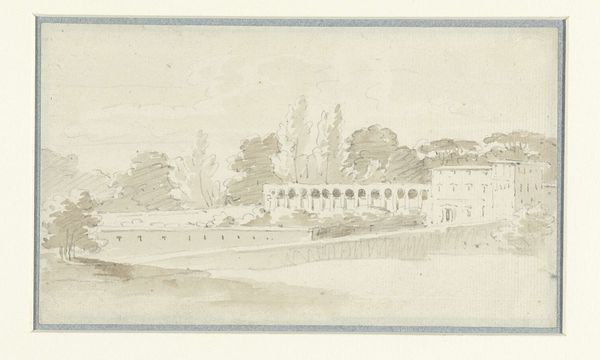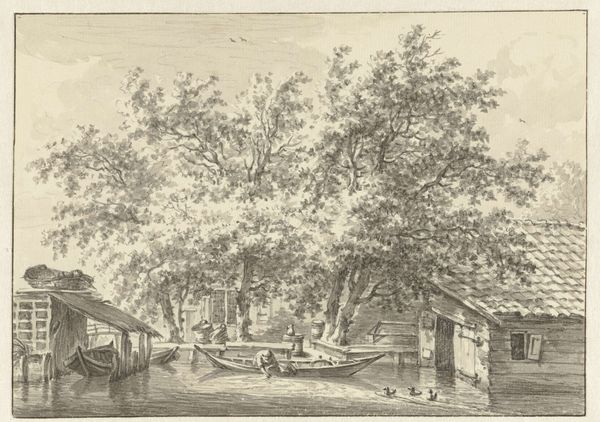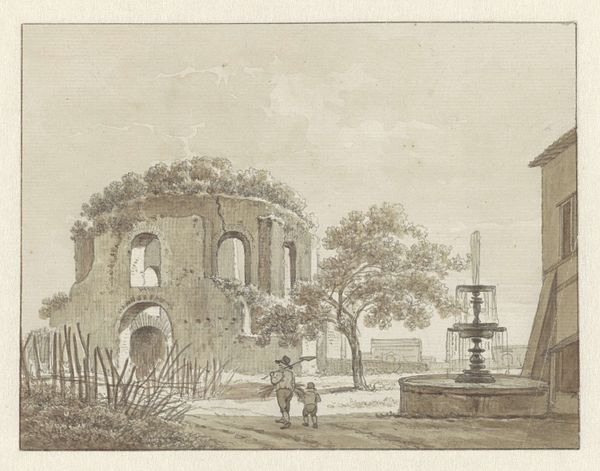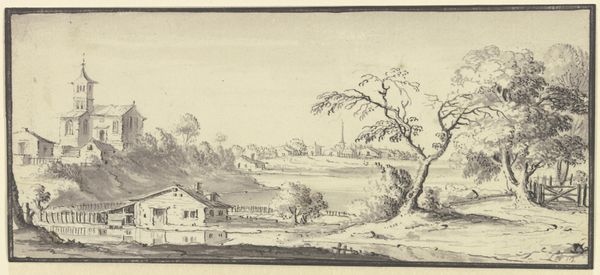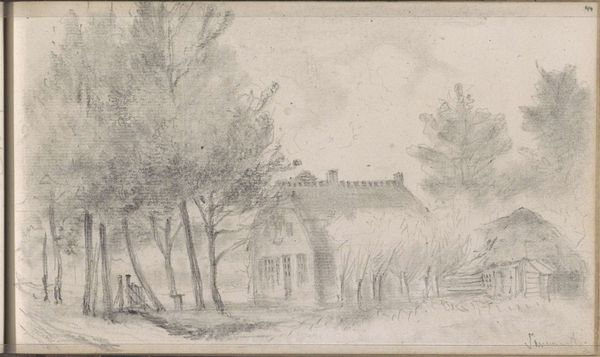
drawing, paper, ink
#
drawing
#
neoclacissism
#
landscape
#
paper
#
ink
#
cityscape
Dimensions: height 128 mm, width 198 mm
Copyright: Rijks Museum: Open Domain
Editor: This drawing, “De Muiderpoort, Amsterdam” by Reinier Vinkeles, dated 1768, captures a serene cityscape in ink on paper. I’m struck by the emphasis on the gate as a passageway between nature and the city's rigid architecture. What do you make of it? Curator: I see the careful application of ink washes less as a picturesque scene and more as a record of material realities. Notice how the very process of creating the image becomes visible. Vinkeles isn't just depicting the Muiderpoort; he's presenting the paper, the ink, the tools that transform raw materials into representation. What can we discern about the labour involved? Editor: Well, you can see the different strokes used to depict different textures…the meticulous rendering of the bricks versus the feathery lightness of the trees. It suggests a careful, skilled hand, not mass production. Does the choice of materials, ink and paper, reflect the period's social context? Curator: Precisely. Ink, though relatively inexpensive compared to oils, still needed processing, trade, and skill to manufacture. Paper, too, was becoming more accessible, facilitating the spread of information and, indeed, artistic expression, across wider social strata. Is Vinkeles challenging or upholding class divisions here through his artistic practice and distribution? Editor: It's fascinating to consider the artwork in that light. I was initially drawn to its aesthetic appeal, but thinking about the labour and materials involved offers a completely different lens. Thank you! Curator: Indeed. By tracing the journey of these materials, we begin to unpack not only the artist's intention but the wider economic and social forces at play in 18th-century Amsterdam.
Comments
No comments
Be the first to comment and join the conversation on the ultimate creative platform.
